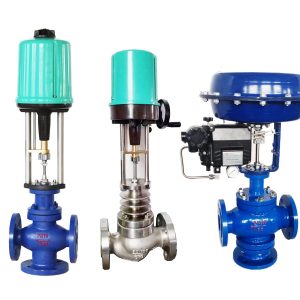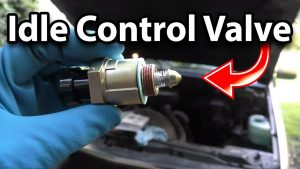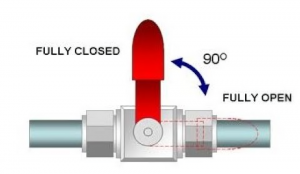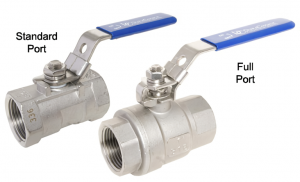1. The Structure of block valve and gate valve
Notes for the type selection in the case of limited installation space
The gate valve can rely on the medium tightly pressing on the sealing surface, so as to achieve the nonleakage. However, the spool constantly scrapes the sealing surface of the seat, which easily wear the surface. What get the wear worse is the differential pressure inside the pipeline, which is generated by the almost switched off gate valve.
Being more complex than that of the block valve, the structure of the gate valve is taller and longer compared with their appearance of the same caliber. Moreover, different from the block valve, the gate valve has both the obvious stem and the hidden one.
2. The Principle of block valve and gate valve
The gate valve has two states only, that is, a full open one and a full closed one. But both of the states are time consuming with a long stroke to travel back and forth. While the block valve bonnet can be hold halfway in its relatively short stroke to control the flow. The gate valve can only be used for cut-off, no other function.
3. The Performance Difference between block valve and gate valve
Being only switched on-and-off, the gate valve runs the media with almost 0 resistance inside the body channel. Therefore, it is a labor-saving process but still a time consuming one for the far away sealing surface needs time for the wedge to reach.
4. The Installation and the Flow Direction of block valve and gate valve
The block valve is a zigzag valve with a low entrance and a high exit. While the gate valve is in a horizontal one with a longer stroke than that of the block valve.
For the flow resistance, the gate valve is smaller than that of the block valve in the sate of a full open. The flow resistance of a common gate valve is about 0.08 ~ 0.12, being labor-saving with two flow directions. The flow resistance coefficient of a common block valve is 3-5 times that of the gate valve, disconnected by force to achieve a seal. It is not until the block valve is completely close that the spool contacts the sealing surface, by which minimize the wear. The actuator-added block valve should adjust its torque control mechanism for the high resistance.
The block valve can be installed in two ways. One is the spool bottom entrance. Its advantages are a packing-relief switch-off to longer the service life of the packing and a replaceable packing in the case of pressured pipeline. While the disadvantage are the large drive torque, which is almost one time of the upper inflow, and the large axial force, which easily bend the stem.
Therefore, this way is only applicable to the small-bore block valve (DN50 below). For DN200 or above ones, the way of installation will be the spool upper entrance. (So as the electric block valves.) The shortcomings of the upper way are just the opposite of the way below.
5. The sealing of block valve and gate valve
The sealing surface of the block valve is a small trapezoidal side of the spool. (Its shape depends on that of the spool.) Once the spool falls off, it is equal to the switch-off. (In the case of large pressure differential, of course, it is not sealed, but it can hold the reverse.) The gate valve depends on the side of the wedge to seal. Being inferior to the block valve, its sealing performance is not like that of the block one with a fall off spool as a way to switch off the valve.












